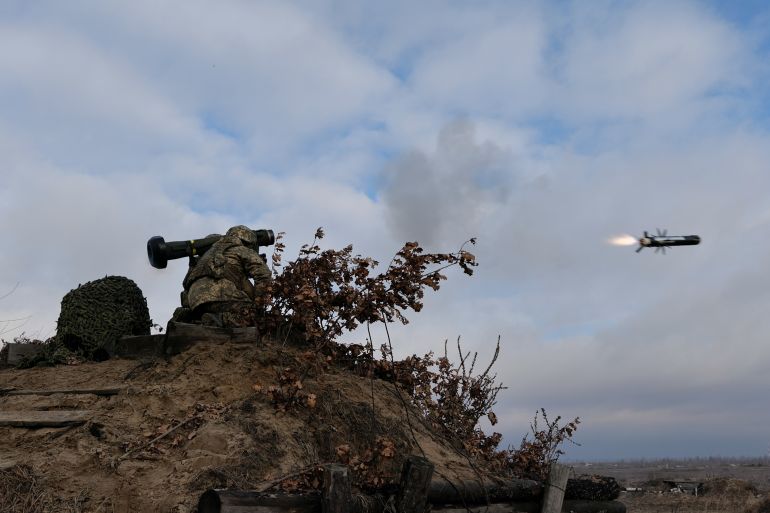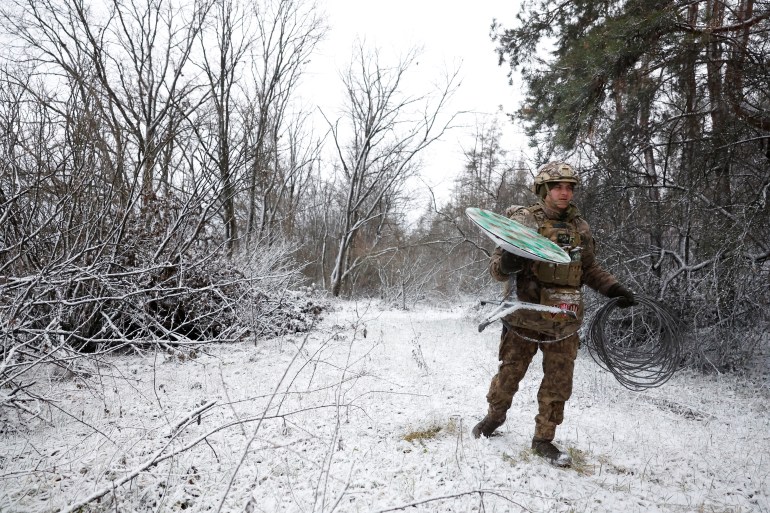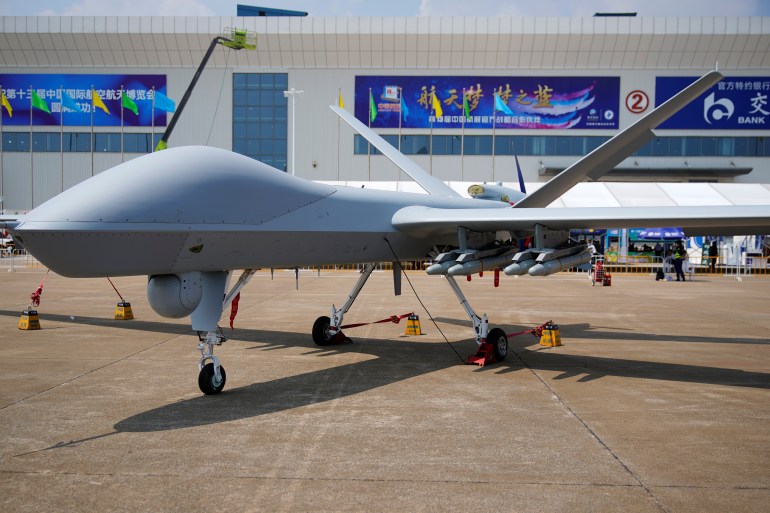Ukraine war focuses China military minds on Starlink, US missiles
Chinese researchers have scrutinised the effects of US weapons in Ukraine to learn lessons for possible future conflict.

China needs the ability to shoot down low-Earth-orbit Starlink satellites and defend its tanks and helicopters against shoulder-fired Javelin missiles, Chinese military researchers have concluded, after studying Russia’s struggles in the Ukraine war as a means to learn lessons for possible future conflict with the United States.
A review of almost 100 articles in more than 20 defence journals has revealed an effort across China’s military-industrial complex to scrutinise the impact of US weapons and technology in Ukraine that could be deployed against Chinese forces in a possible future conflict, Reuters reported on Wednesday.
Keep reading
list of 4 itemsChina beating West in race for critical technologies, report says
China blames Ukraine crisis on ‘invisible hand’
China blasts Germany over reported plan to ban Huawei, ZTE
Some of the Chinese journal articles stress Ukraine’s relevance given the risk of a regional conflict that pits Chinese forces against the US and its allies, possibly over Taiwan.
The Chinese-language journals, which reflect the work of hundreds of Chinese researchers across a network of People’s Liberation Army (PLA)-linked universities, state-owned weapons manufacturers and military intelligence think tanks, are far more candid in their assessments of Russian shortcomings in warfare than China’s official position on Moscow’s war, which it has refrained from criticising.
Take out Starlink
Half a dozen papers by PLA researchers highlight Chinese concern at the role of Starlink, a satellite network developed by Elon Musk’s US-based space exploration company SpaceX, in securing the communications of Ukraine’s military amid Russian missile attacks on the country’s power grid.
“The excellent performance of ‘Starlink’ satellites in this Russian-Ukrainian conflict will certainly prompt the US and Western countries to use ‘Starlink’ extensively” in possible hostilities in Asia, said a September article co-written by researchers at the Army Engineering University of the PLA.
The authors deemed it “urgent” for China – which aims to develop its own similar satellite network – to find ways to shoot down or disable Starlink.
Collin Koh, a security fellow at Singapore’s S Rajaratnam School of International Studies, said the Ukrainian conflict had provided impetus to longstanding efforts by China’s military scientists to develop cyberwarfare models and find ways of better protecting armour from modern Western weapons.
“Starlink is really something new for them to worry about; the military application of advanced civilian technology that they can’t easily replicate,” Koh said.
Beyond technology, Koh said he was not surprised that Ukrainian special forces operations inside Russia were being studied by China, which, like Russia, moves troops and weapons by rail, making them vulnerable to sabotage.
Despite its rapid modernisation, the PLA has no recent combat experience. China’s invasion of Vietnam in 1979 was its last major battle – a conflict that rumbled on until the late 1980s.
China’s defence ministry did not respond to a request for comment about the findings and Reuters was also unable to determine how closely the conclusions reflect the thinking among China’s military leaders.

Drone warfare a ‘door kicker’ in future conflict
Ukraine has also forged an apparent consensus among Chinese researchers that drone warfare merits greater investment.
“These unmanned aerial vehicles will serve as the ‘door kicker’ of future wars,” noted one article in a tank warfare journal published by state-owned arms manufacturer Norinco, a supplier to the PLA, that described drones’ ability to neutralise enemy defences.
An article in the administration’s official journal in October noted that China should improve its ability to defend military equipment in view of the “serious damage to Russian tanks, armoured vehicles and warships” inflicted by Stinger and Javelin missiles operated by Ukrainian fighters.
One article, published in October by two researchers at the PLA’s National Defence University, analysed the effect of US deliveries of high-mobility artillery rocket systems (HIMARS) to Ukraine, and whether China’s military should be concerned.
“If HIMARS dares to intervene in Taiwan in the future, what was once known as an ‘explosion-causing tool’ will suffer another fate in front of different opponents,” it concluded.
The article highlighted China’s own advanced rocket system, supported by reconnaissance drones, and noted that Ukraine’s success with HIMARS had relied on the US sharing of target information and intelligence via Starlink.
While some of the journals involved are operated by provincial research institutes, others are official publications for central government bodies such as the State Administration for Science, Technology and Industry for National Defence, which oversees weapons production and military upgrades.

Taiwan scenario
Four diplomats, including two military attaches, said PLA analysts have long worried about superior US military might, but Ukraine has sharpened their focus by providing a window on a large power’s failure to overwhelm a smaller one backed by the West. While the Ukraine scenario has obvious Taiwan comparisons, there are differences, particularly given the island’s vulnerability to a Chinese sea blockade.
Western countries, by contrast, can supply Ukraine by land via its European neighbours.
References to Taiwan are relatively few in the journals reviewed by Reuters, but diplomats and foreign scholars tracking the research say that Chinese defence analysts are tasked to provide separate internal reports for senior political and military leaders.
US Central Intelligence Agency Director William Burns has said that Xi has ordered his military to be ready to invade Taiwan by 2027, while noting that the Chinese leader was probably unsettled by Russia’s experience in Ukraine.
Several articles analyse the strengths of the Ukrainian resistance, including special forces’ sabotage operations inside Russia, the use of the Telegram app to harness civilian intelligence, and the defence of the Azovstal steel plant in Mariupol.
Russian successes are also noted, such as tactical strikes using the Iskander ballistic missile. The journal Tactical Missile Technology, published by state-owned weapons manufacturer China Aerospace Science and Industry Corporation, produced a detailed analysis of the Iskander, but only released a truncated version to the public.
Many other articles also focus on the mistakes of Russia’s invading army, with one in the tank warfare journal identifying outdated tactics and a lack of unified command, while another in an electronic warfare journal said Russian communications interference was insufficient to counter NATO’s provision of intelligence to the Ukrainians, leading to costly ambushes.
Chinese research also concludes that the information war has been won by Ukraine and its allies.